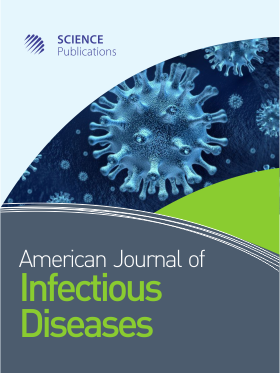Hospital-Based Antibiotic Therapy in Benin: A Point Prevalence Survey at the Departmental and Teaching Hospital of Borgou-Alibori in 2022
- 1 Department of Infectious Diseases and Tropical Medicine Unit, University of Parakou, 03PO Box 112, Parakou, Benin
- 2 Mycobacteriology Reference Laboratory (LRM), National Teaching Hospital Centre for Pneumology, Cotonou, Benin
- 3 Departmental and Teaching Hospital of Borgou-Alibori (DTH-BA), Parakou, Benin
- 4 Department of Hospital Medicine and Diagnostic Explorations (DGMHED), Ministry of Health, Cotonou, Benin
- 5 Essential Drugs and Medicines Policy (EDM), World Health Organization Benin Country Office (WHO), Cotonou, Benin
- 6 Faculty of Medicine, University of Parakou, 03PO Box 112, Parakou, Benin
Abstract
Antimicrobial resistance is a public health problem. The main factor favoring the development of antibiotic resistance is the abusive or inappropriate use of antibiotics. This study is the first to take all services into account and aims to describe antibiotic therapy practices in the Departmental and Teaching Hospital of Borgou-Alibori (DTH-BA). Patients and methods: This was a cross-sectional, descriptive survey conducted at DTH-BA from January 11 to 18, 2022. An exhaustive recruitment of all hospitalized patients was carried out through a single and punctual passage at 16:00 in each hospital department. Data were collected using the WHO's standard questionnaire for point prevalence surveys of antibiotic use, from PPS V6. The web application (GLASS-HAMUPPS) was used for data entry, validation and processing. Analysis was performed using EPI-INFO software. The survey protocol has been approved by the national health research ethics committee. Results: A total of 145 patients were included from 9 hospital wards. The sex ratio was 0.69. The mean age of hospitalized children was 3.13±4.17 years and that of adults was 35.76±15.54 years. The overall frequency of antibiotic treatment across all departments was 70.34%. Pediatrics (90.90%) and intensive care (87.50%) were in the lead. Empirical antibiotic therapy was used in 98.41% of cases. Amoxicillin/clavulanic acid was the most prescribed antibiotic (17.99%), followed by metronidazole (15.87%), ampicillin (15.35%) and ceftriaxone (14.28%). Community-acquired infections accounted for 61.91% of cases. The frequency of medical antibiotic prophylaxis was 22.22% and surgical prophylaxis was 11.64%. Conclusion: Antibiotic consumption was high at DTH-BA and involved almost exclusively probabilistic antibiotic therapy. A program of proper use and monitoring of antibiotic prescriptions, coupled with improved access to microbiological tests, is needed to improve practices.
DOI: https://doi.org/10.3844/ajidsp.2023.63.71

- 4,116 Views
- 2,383 Downloads
- 1 Citations
Download
Keywords
- Antibiotic
- Point Prevalence
- Hospital
- Benin
